
Terrace Hill, also known as Hubbell Mansion, Benjamin F. Allen House or the Iowa Governor's Mansion, is the official residence of the governor of Iowa, United States. Located at 2300 Grand Avenue in Des Moines, it is an example of Second Empire architecture. The home measures 18,000 square feet. It sits on a hill overlooking downtown Des Moines, and has a 90-foot (27 m) tower that offers a commanding view of the city. The building's steeply pitched mansard roof, open verandas, long and narrow and frequently paired windows, and bracketed eaves give this house an irreplaceable design. The house was designated a National Historic Landmark in 2003.

The Istana is the official residence and office of the president of Singapore. The palace is open to the public during scheduled public holidays and is where the president receives and entertains state guests.
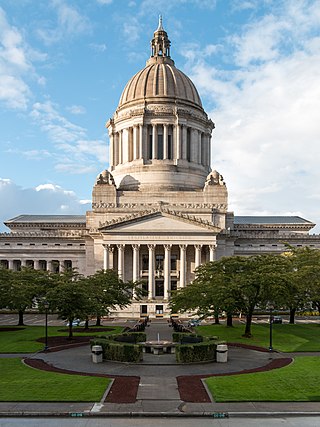
The Washington State Capitol or Legislative Building in Olympia is the home of the government of the state of Washington. It contains chambers for the Washington State Legislature and offices for the governor, lieutenant governor, secretary of state and treasurer and is part of a campus consisting of several buildings. Buildings for the Washington Supreme Court, executive agencies and the Washington Governor's Mansion are part of the capitol campus.
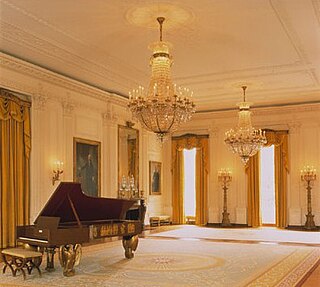
The East Room is an event and reception room in the Executive Residence, which is a building of the White House complex, the home of the president of the United States. The East Room is the largest room in the Executive Residence; it is used for dances, receptions, press conferences, ceremonies, concerts, and banquets. The East Room was one of the last rooms to be finished and decorated, and it has undergone substantial redecoration over the past two centuries. Since 1964, the Committee for the Preservation of the White House has, by executive order, advised the president of the United States and first lady on the decor, preservation, and conservation of the East Room and other public rooms at the White House.

The Green Room is one of three state parlors on the first floor of the White House, the home of the president of the United States. It is used for small receptions and teas. During a state dinner, guests are served cocktails in the three state parlors before the president, first lady, and a visiting head of state descend the Grand Staircase for dinner. The room is traditionally decorated in shades of green. The room is approximately 28 by 22.5 feet. It has six doors, which open into the Cross Hall, East Room, South Portico, and Blue Room.

The State Dining Room is the larger of two dining rooms on the State Floor of the Executive Residence of the White House, the home of the president of the United States in Washington, D.C. It is used for receptions, luncheons, larger formal dinners, and state dinners for visiting heads of state on state visits. The room seats 140 and measures approximately 48 by 36 feet.

The Vermeil Room is located on the ground floor of the White House, the official residence of the president of the United States. The room houses a collection of silver-gilt or vermeil tableware, a 1956 bequest to the White House by Margaret Thompson Biddle. Portraits of American First Ladies hang in the room.
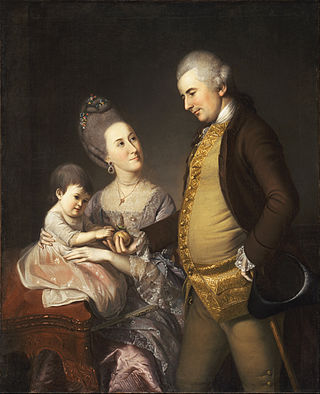
Thomas Affleck (1740–1795) was an 18th-century American cabinetmaker, who specialized in furniture in the Philadelphia Chippendale style.

The President's Dining Room is a dining room located in the northwest corner of the second floor of the White House. It is located directly above the Family Dining Room on the State Floor and looks out upon the North Lawn. The Dining Room is adjacent to the Family Kitchen, a small kitchen designed for use by the First Family, and served by a dumbwaiter connected to the main kitchen on the ground floor.

The Family Dining Room is a dining room located on the State Floor of the White House, the official residence of the president of the United States. The room is used for smaller, more private meals than those served in the State Dining Room. Used in the 1800s as a space for the First Family to have their meals, the Family Dining Room was used less for family meals and more for working lunches and small dinners in the 20th and 21st centuries.

The Louisiana Governor's Mansion is the official residence of the governor of Louisiana and their family. The Governor's Mansion was built in 1963 when Jimmie Davis was Governor of Louisiana. The Mansion overlooks Capital Lake near the Louisiana State Capitol in Baton Rouge.
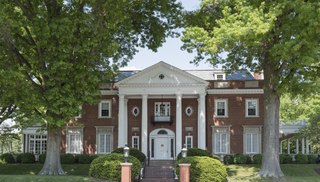
The West Virginia Governor's Mansion is a historic residence located next to the Kanawha River in Charleston, West Virginia and is the official residence of the governor of West Virginia.

The Ohio Governor's Residence and Heritage Garden is the official residence of the governor of Ohio. The residence was built during 1923–1925 by industrialist Malcolm D. Jeffrey and has served as the official home of the governor since 1957. The mansion is located at 358 North Parkview Avenue in Bexley, a suburb and enclave of the state capital, Columbus. It is only one of four official state governor's residences in the country that is not located within its state's capital.

The Rucker Mansion, also known as the Rucker House is a private residence located in Everett, Washington, United States, and is registered with the National Register of Historic Places (NRHP). According to the registry, the home was originally commissioned for $40,000 by the Rucker family as a wedding gift for Ruby Brown, who married Bethel Rucker in December 1904. The construction of the Rucker Mansion was completed approximately in July 1905. That same year, local newspaper, the Everett Herald, described the mansion as, “without a doubt, one of the finest residences ever constructed in the Northwest.”
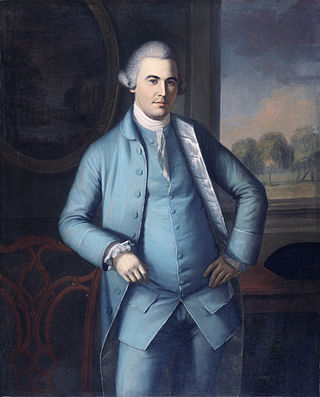
Benjamin Randolph (1721—1791) was an 18th-century American cabinetmaker who made furniture in the Queen Anne and Philadelphia Chippendale styles. He made the lap desk on which Thomas Jefferson drafted the Declaration of Independence.

Samuel Harding was an American cabinetmaker, remembered for his Queen Anne style furniture and for the interior architectural ornament of Independence Hall, in Philadelphia, Pennsylvania, United States.
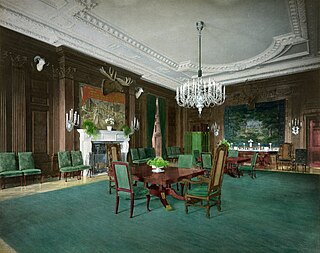
A. H. Davenport and Company was a late 19th-century, early 20th-century American furniture manufacturer, cabinetmaker, and interior decoration firm. Based in Cambridge, Massachusetts, it sold luxury items at its showrooms in Boston and New York City, and produced furniture and interiors for many notable buildings, including The White House. The word "davenport," meaning a boxy sofa or sleeper-sofa, comes from the company.

McLean's Mansion is a homestead in Christchurch, New Zealand. The two hectares property is situated between Manchester and Colombo Streets. The mansion was initially known as 'Holly Lea', but later became known as McLean's Mansion after its initial owner. It is the largest wooden residence in New Zealand. The mansion, designed by Robert England, architect of Christchurch, is a fusion of styles of Jacobean architecture and Victorian features, akin to the Mentmore Towers (1852–54) of Sir Joseph Paxton in Buckinghamshire in England. It was built between April 1899 and September 1900. The house is registered as a Category I heritage building by Heritage New Zealand. After the 2011 Christchurch earthquake, the owners applied to demolish the earthquake-damaged buildings, but their request was denied by the heritage body and the courts. In December 2016, the building sold to a trust that will restore it for use as a gallery. Restoration is expected to be finished by 2024.
The Acadia Plantation was a historic plantation house in Thibodaux, Louisiana, U.S.. It was the plantation of James Bowie, Rezin P. Bowie, and Stephen Bowie. James "Jim" Bowie, served in the Battle of the Alamo. It was listed on the National Register of Historic Places on May 29, 1987. It was demolished in 2010.
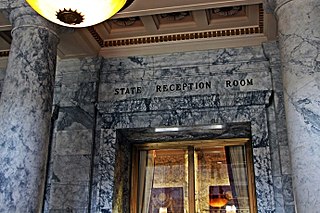
The State Reception Room is a formal salon on the third floor of the Washington State Capitol in which foreign dignitaries and other official visitors are presented to, and received by, the Governor of Washington. It is notable for having what was once the world's largest single-loom carpet.





















